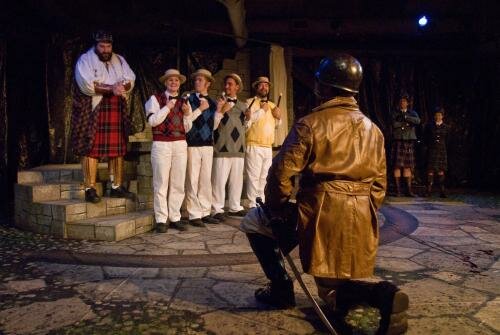Following last weekend’s post on strange relics and memorials found in our city parks north of the Lake Washington Ship Canal, it’s time to hunt out the unusual park attractions in the southern reaches of our city.
Start at Volunteer Park. As we have pointed out, Seattle has a seemingly disproportional number of tributes to the Spanish-American War. Clearly that war is notable for a large number of veterans who were active and successful at providing memorials to their fallen comrades. Volunteer Park is, in fact, named in honor of the young men and women who volunteered for our armed forces to fight and win that war.
Near the entrance to the conservatory, in the middle of a roundabout, is a great statue of William H. Seward. Without a doubt, Seward is one of the greatest American statesmen. He served as Secretary of State under Lincoln and negotiated the purchase of Alaska, the best bang for the buck our country ever got. He visited Seattle for two days in July, 1869. In fact, he was one of the first major American statesmen to come to the city.
The town went crazy with excitement. He was mobbed everywhere he went. The grateful citizens of the Emerald City never forgot his kindness in stopping by. They honored his visit by naming a street after him, naming a park after him, and erecting a statue to him. Sculpted by the great artist Richard E. Brooks, it is one of the finest statues in the city, perhaps on the entire west coast. The Seward statue was paid for by pubic subscription and was created for the 1909 Alaska Yukon Exposition. It was moved to Volunteer Park in 1910.
Before you leave Volunteer Park, drop by the kid’s play area. There you will see the usual assortment of cheap, press wood play structures and a large, white bone. The bone is a work of art entitled, “Block.” Created by Charles Smith in 1962, it honors Dorothy W. Block (1926-1961) who was Park Commissioner 1959-1961. It’s a fine example of mid-century American sculpture and holds its own against the immense popularity thrown of Isamu Noguchi’s Black Sun.
Over the years, there has been occasional, uninformed criticism that this work of art, with its wonderful bone-like shape, is unsafe for use as a children’s playground piece. Poppycock. It hails from a time when artists wanted art that people could interact with. Children have a great time playing on the giant bone and it is, in my opinion, the best kids feature in any park in the city.
Leaving Volunteer Park, head over to the corner of 24th Avenue and E. Howell St. There you will find Homer Harris Park. This park was developed in the 1990s as a tribute to Dr. Harris, a dermatologist active from the early 1930s until the late ’90s. The park is small, but it is a wonderful gathering place. The park features magnificent and mystic sculptures with an Asian motif. The park doesn’t have one of those ubiquitous climbing structures that tend to ruin the lovely sightlines of our parks. Instead, it has a humble bark pit where kids can interact with the fun sculptures.
Homer Harris Park is a wonderful example of Seattle’s great park innovation of “pocket parks.” During the early 1970s, as part of the city’s landmark Forward Thrust projects, the city bought small lots or developed abandoned, random lots, into a network of small neighborhood parks. Another great pocket park is just down the street on 26th Avenue, between E. Howell and E. Olive, is Plum Tree Park, so named for a small orchard of plum trees.
Now, it’s time to head south to Georgetown for a visit to Oxbow Park. There you will find one big hat and a big pair of cowboy boots.
Programmatic Architecture is the art of designing a building in the shape of some well known object, usually as a sign of what could be purchased inside (think of a hot dog stand shaped like a hot dog). This style of architecture really took off in the 1930s and flourished until the 1960s. Seattle never had a lot of programmatic buildings, but it did have the Twin Teepees Restaurant and the Hat ‘n’ Boots gas station. When the Hat ‘n’ Boots gas station shut down in the 1980s, the huge buildings fell into ruin and were riddled with graffiti. When residents of Seattle’s Georgetown neighborhood rallied to save the structures, they were moved to Oxbow Park just around the corner from their original location. They have been lovingly repaired and repainted.
Exploring Seattle’s public parks remains one of the great joys of living here. This list of oddities, one-shots and artifacts is just a taste of the hidden or forgotten treasures that inhabit our parks and enrich our lives. So don’t settle for just sunbathing, jogging or biking where the city tells you. Get out and explore your parks. You’ll be surprised by what you find.
